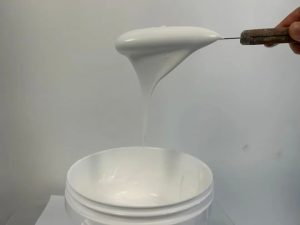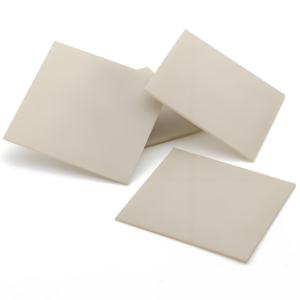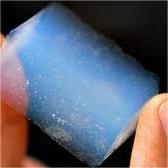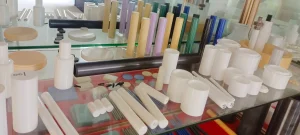Professional industry ceramic supplier, silicon nitride, silicon carbide, aluminum nitride and any other kinds of ceramics.
1. Introduction
Just 24 hours ago, a major materials supplier announced a breakthrough in sintering technology that significantly boosts the thermal shock resistance of silicon carbide crucibles—making them even more competitive in high-demand industries like semiconductor crystal growth and aerospace alloy casting. This innovation arrives as global demand for high-performance ceramics surges, driven by clean energy and electric vehicle manufacturing.

Silicon carbide crucibles sit at the heart of extreme-environment applications, but they’re not the only game in town. Engineers and manufacturers must often choose between silicon carbide, silicon nitride, alumina, and zirconia-based systems. Each offers unique advantages—and drawbacks. In this deep dive, we’ll compare these advanced ceramics across five critical dimensions to help you make informed decisions.
2. Material Composition and Manufacturing Methods
Silicon carbide (SiC) is a compound of silicon and carbon known for its exceptional hardness, thermal conductivity, and chemical inertness. Crucibles made from silicon carbide are typically fabricated via reaction bonding (RBSiC), sintering, or hot pressing. RBSiC silicon carbide tile blocks, for example, offer excellent structural integrity and are widely used in furnace linings.
In contrast, silicon nitride (Si3N4) crucibles—often sourced from a silicon nitride crucible factory—are prized for their superior fracture toughness and oxidation resistance at elevated temperatures. They’re commonly used where mechanical reliability under thermal cycling is critical.
- Reaction-bonded SiC: porous but strong, ideal for static high-temp environments
- Sintered SiC: denser, better corrosion resistance, higher cost
- Silicon nitride: tougher, less conductive, excellent for dynamic thermal loads
3. Performance Comparison: Silicon Carbide vs. Alternatives

When evaluating a silicon carbide crucible against zirconia crucibles or alumina (Al2O3) systems, key metrics include melting point compatibility, thermal shock resistance, and chemical reactivity with molten metals.
Boron carbide vs silicon carbide is another frequent comparison—especially in armor and abrasive applications—but boron carbide is rarely used for crucibles due to its extreme brittleness and cost. Meanwhile, silicon carbide ceramic tubes and thermocouple protection tubes outperform alumina tubes in aggressive atmospheres thanks to SiC’s stability in reducing environments.
Silicon nitride rings and custom silicon nitride heat shields excel in turbine and bearing applications but aren’t typically used for direct metal containment. Their niche lies in structural support under stress, not chemical containment.
4. Unexpected Applications: From Furnaces to Dinnerware
Beyond industrial use, silicon carbide’s thermal properties have sparked interest in consumer goods. Products like silicon carbide ceramic baking dishes, silicon carbide ceramic dinner plates, and even silicon carbide ceramic butter dishes leverage the material’s even heating and durability.

Brands like Staub have explored silicon carbide baking dish Staub variants for gourmet cookware. Similarly, silicon carbide ceramic serving bowls and silicon carbide ceramic casserole dishes with lids are gaining traction among chefs seeking oven-to-table performance.
While these items aren’t pure SiC (often composites or glaze-coated ceramics inspired by SiC aesthetics), they reflect growing consumer awareness of advanced ceramic benefits. Note: true silicon carbide ceramic dinnerware remains rare due to machining costs—but the trend is rising.
5. Market Trends and Future Outlook
The high purity silicon nitride powder market and high purity aluminum nitride granules market are both expanding rapidly, signaling broader adoption of advanced ceramics. Meanwhile, innovations in RBSiC manufacturing are lowering costs for components like silicon carbide ceramic columns, silicon carbide burner nozzles, and silicon carbide brick.
Customization is also on the rise: from silicon carbide ceramic disc taps for plumbing to silicon carbide ceramic grinding discs for precision pottery work. Even silicon carbide ceramic plates for painting are emerging in art studios.
However, challenges remain. Machining dense silicon carbide requires diamond tools, and porosity control in crucibles affects metal purity—critical in semiconductor and rare-earth processing. As a result, hybrid designs (e.g., silicon carbide–mullite tubes) are gaining favor for balanced performance.
6. Conclusion
Choosing the right crucible or ceramic component isn’t just about temperature ratings—it’s about matching material behavior to your specific process environment. Silicon carbide crucibles dominate in thermal conductivity and corrosion resistance, while silicon nitride excels in mechanical resilience. Meanwhile, consumer-facing silicon carbide ceramic dishes hint at a future where industrial-grade materials enter everyday life. As sintering tech improves and costs fall, expect silicon carbide and its advanced ceramic cousins to play even bigger roles across industries.
Our Website founded on October 17, 2012, is a high-tech enterprise committed to the research and development, production, processing, sales and technical services of ceramic relative materials such as 5. Our products includes but not limited to Boron Carbide Ceramic Products, Boron Nitride Ceramic Products, Silicon Carbide Ceramic Products, Silicon Nitride Ceramic Products, Zirconium Dioxide Ceramic Products, etc. If you are interested, please feel free to contact us.





